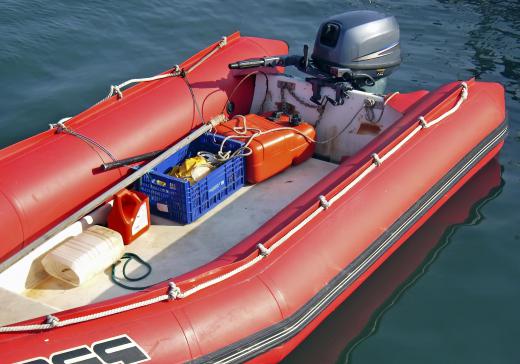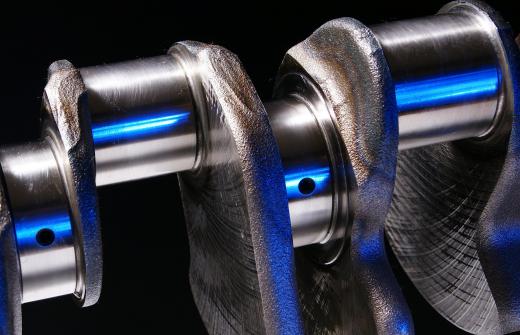Splash lubrication is a method of applying lubricant, a compound that reduces friction, to parts of a machine. In the splash lubrication of an engine, dippers on the connecting-rod bearing caps are submerged in oil with every rotation. When the dippers emerge from the oil trough, the oil is splashed onto the cylinders and pistons, lubricating them.
Experts agree that splash lubrication is suitable for small engines such as those used in lawnmowers and outboard boat motors, but not for automobile engines. This is because the amount of oil in the trough has a dramatic impact on how well the engine parts can be lubricated. If there is not enough oil, the amount splashed onto the machinery will be insufficient. Too much oil will cause excessive lubrication, which can also cause problems.

Engines are often lubricated through a combination of splash lubrication and force feeding. In some cases, an oil pump keeps the trough full so that the engine bearings can always splash enough oil onto the other parts of the engine. As the engine speeds up, so does the oil pump, producing a stream of lubricant powerful enough to coat the dippers directly and ensure a sufficient splash. In other cases, the oil pump directs oil to the bearings. Holes drilled in the bearings allow it to flow to the crankshaft and connecting rod bearings, lubricating them in the process.

Gears in enclosed gear drives can also be splash lubricated. In this case, it is the tooth of the gear that is dipped in oil, which is then spread onto the teeth of the meshing gear as it turns. Experts recommend this method of gear lubrication for medium and high speeds and grease lubrication for lower speeds.
In addition to lowering the amount of friction in an engine or gear box, splash lubrication also helps regulate the system's temperature. Friction generates heat, and the oil is able to absorb and dissipate some of that heat, protecting the gears from additional wear and tear.
The effectiveness of splash lubrication is determined in part by the kind of oil used. Experts recommend an oil that is thick enough to provide sufficient lubrication, but not so viscous that it heats up as it is churned about in the oil trough. The purity of the oil is also a factor, and it is recommended that oil used in splash lubrication be filtered regularly and replenished when necessary.
